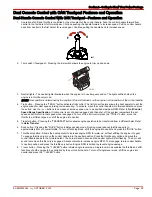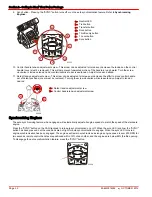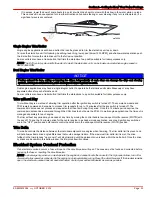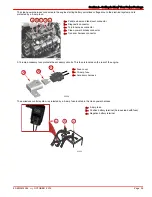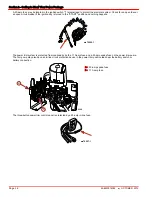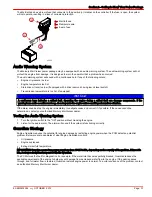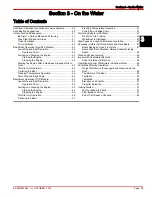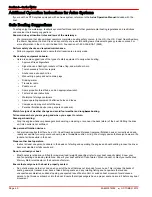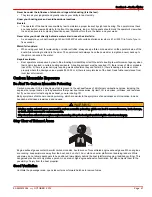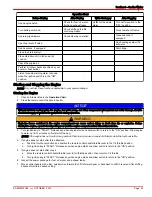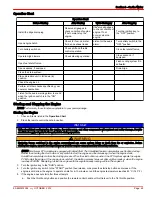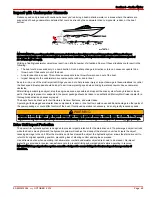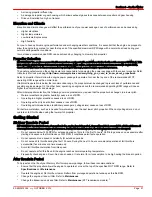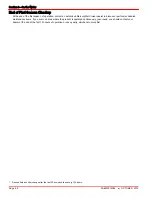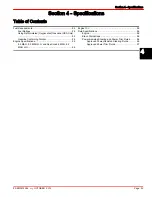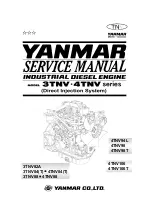
Section 3 - On the Water
90-8M0074352
eng
OCTOBER 2012
Page 41
Never be under the influence of alcohol or drugs while boating (it is the law).
•
They impair your judgment and greatly reduce your ability to react quickly.
Know your boating area and avoid hazardous locations.
Be alert.
•
The operator of the boat is responsible by law to maintain a proper lookout by sight and hearing. The operator must have
an unobstructed view particularly to the front. No passengers, load, or fishing seats should block the operator's view when
the boat is above idle or planing transition speed. Watch out for others, the water, and your wake.
Never drive your boat directly behind a water skier in case the skier falls.
•
As an example, your boat traveling at 40 km/h (25 MPH) will overtake a fallen skier who is 61 m (200 ft) in front of you in
five seconds.
Watch fallen skiers.
•
When using your boat for water skiing or similar activities, always keep a fallen or down skier on the operator's side of the
boat while returning to attend to the skier. The operator should always have the down skier in sight and never back up to
the skier or anyone in the water.
Report accidents.
•
Boat operators are required by law to file a Boating Accident Report with their state boating law enforcement agency when
their boat is involved in certain boating accidents. A boating accident must be reported if 1) there is loss of life or probable
loss of life, 2) there is personal injury requiring medical treatment beyond first aid, 3) there is damage to boats or other
property where the damage value exceeds $500.00 or 4) there is complete loss of the boat. Seek further assistance from
local law enforcement.
Carbon Monoxide Exposure
Be Alert To Carbon Monoxide Poisoning
Carbon monoxide (CO) is a deadly gas that is present in the exhaust fumes of all internal combustion engines, including the
engines that propel boats, and the generators that power boat accessories. By itself, CO is odorless, colorless, and tasteless,
but if you can smell or taste engine exhaust, you are inhaling CO.
Early symptoms of carbon monoxide poisoning, which are similar to the symptoms of seasickness and intoxication, include
headache, dizziness, drowsiness, and nausea.
!
WARNING
Inhaling engine exhaust gases can result in carbon monoxide poisoning, which can lead to unconsciousness, brain damage,
or death. Avoid exposure to carbon monoxide.
Stay clear from exhaust areas when engine is running. Keep the boat well‑ventilated while at rest or underway.
Stay Clear of Exhaust Areas
41127
Engine exhaust gases contain harmful carbon monoxide. Avoid areas of concentrated engine exhaust gases. When engines
are running, keep swimmers away from the boat, and do not sit, lie, or stand on swim platforms or boarding ladders. While
underway, do not allow passengers to be positioned immediately behind the boat (platform dragging, teak/body surfing). This
dangerous practice not only places a person in an area of high engine exhaust concentration, but also subjects them to the
possibility of injury from the boat propeller.
Good Ventilation
Ventilate the passenger area, open side curtains or forward hatches to remove fumes.



